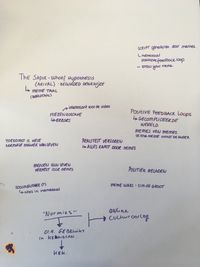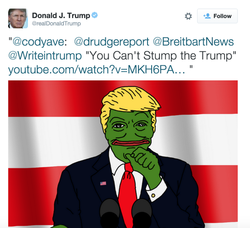Difference between revisions of "User:Ricotta"
| Line 52: | Line 52: | ||
Language of Meme culture | Language of Meme culture | ||
| − | - Just like our languages, Meme culture language changes over time. When we master a language, it changes the way we think, just as ''Lera Boroditsky'' explains in [https://www.ted.com/talks/lera_boroditsky_how_language_shapes_the_way_we_think#t-287075 this] ''Ted Talk''. | + | - Just like our languages, Meme culture language changes over time. When we master a language, it changes the way we think, just as ''Lera Boroditsky'' explains in [https://www.ted.com/talks/lera_boroditsky_how_language_shapes_the_way_we_think#t-287075 this] ''Ted Talk''.<br> |
- This occurrence is also known as the [https://en.wikipedia.org/wiki/Linguistic_relativity ''Sapir-Whorf Hypothesis''], and is also used in Sci-Fi such as the movie ''Arrival (2016)''. | - This occurrence is also known as the [https://en.wikipedia.org/wiki/Linguistic_relativity ''Sapir-Whorf Hypothesis''], and is also used in Sci-Fi such as the movie ''Arrival (2016)''. | ||
Revision as of 19:22, 9 October 2018
R I C A R D O A B B A S Z A D E H
Cybernetics: Working with self-organizing systems
Critical Making
'Reimagine an existing technology or platform using the provided sets of cards.
'With our group, we simply chose which combination of cards most suited our interests. Thus we ended up with Memes in a dystopian future, realised by video.
This was a collaboration with: Laura Ketting, Jorijn de Jonge and Eva Schoren.
Research
After agreeing on the subject, we immediately began writing down collective knowledge and ideas. How does this fit in the feedback loop as discussed in class? We also started a shared Google Drive document to collect all our found information.
It soon became clear that Memes are not only mere jokes floating around the internet, but they also carry heavy political value. We also discovered that the politically charged messages had to be transfered by language, thus Meme culture has a language on its own. With these findings in mind, we started to further research and develop our project.
Findings / references
Meme culture
- The Meme Wars by Kim de Groot or rather Mona Lisa's is a good example of someone who researches the relationship between Meme culture and folklores. Watch the footage of the Meme Wars video here here<<
- Pepe the Frog is a classic meme icon, and it is used in countless Meme's. However, since Donald Trump used this Meme (see image on the right), Pepe the Frog became a political symbol of the right-wing society. It also became the mascot of Kekistan, a fantasy world which is part of a strange sub-culture. This interesting (Dutch) documentary about Kekistan can be found here<<
- This is certainly not the first time where presidents get intermigled with Memes. This is a little (joke) example of a Barack Obama Meme.
- Memes often get merged with other Memes, and carry a different value with their origin and references. Origin of the name Kek.
Language of Meme culture
- Just like our languages, Meme culture language changes over time. When we master a language, it changes the way we think, just as Lera Boroditsky explains in this Ted Talk.
- This occurrence is also known as the Sapir-Whorf Hypothesis, and is also used in Sci-Fi such as the movie Arrival (2016).


